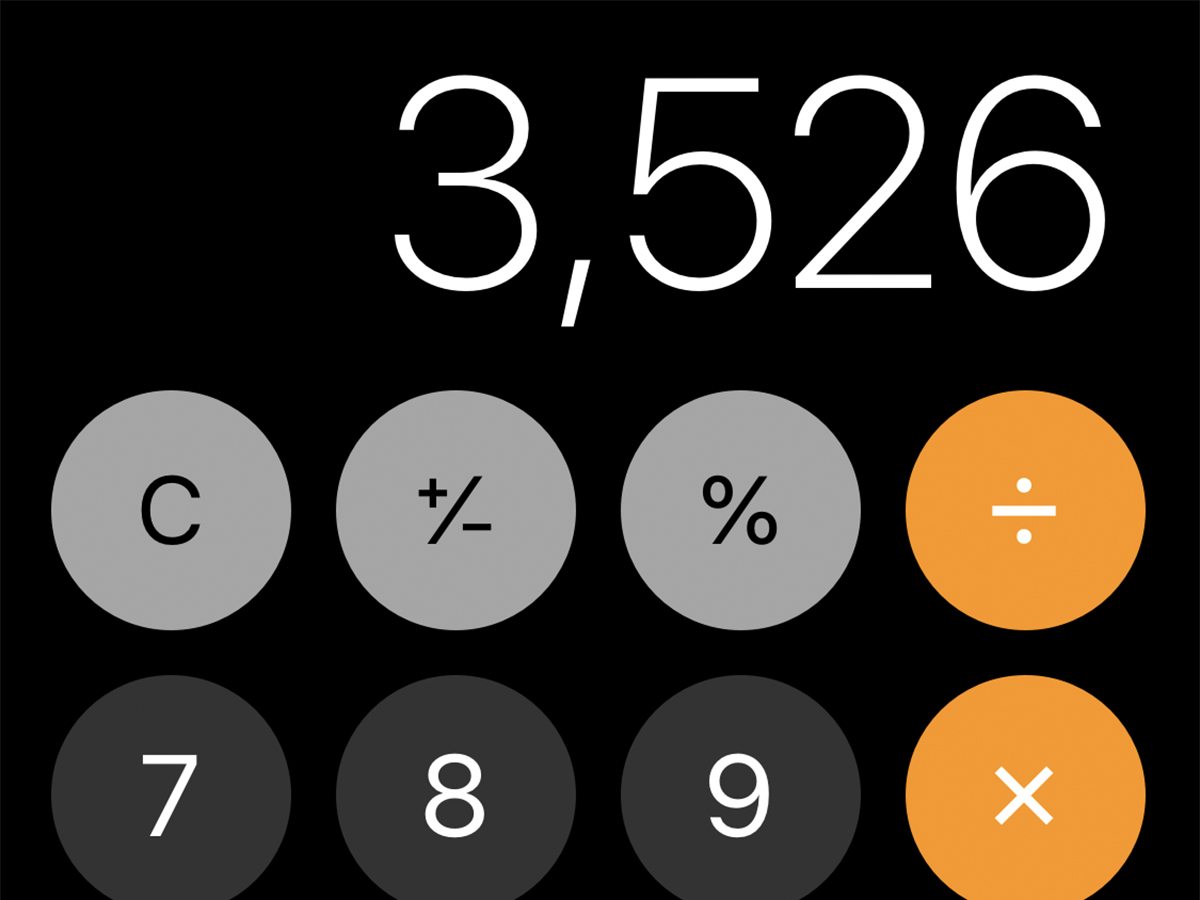Smartphone gestures that will change how you use your phone
Go beyond single-finger taps.

This story has been updated. It was originally published on September 27, 2018.
If you want to navigate your smartphone at top speed, single-finger tapping just won’t cut it. As device manufacturers ditch physical buttons for huge, bezel-free screens, specific hand gestures have become vital shortcuts for powering through emails, notifications, maps, and more.
But how can you tell when to make specific motions? The correct swipe isn’t always obvious (especially if you’ve recently upgraded your years-old iPhone to one without a Home button or swapped iOS for Android). Here are the gestures you should add to your repertoire.
Useful iPhone gestures
Hide the keyboard
When you’re typing a message, but decide to check something on the lower half of the screen, that keyboard gets in the way. To hide it, swipe down on its top border; restore it by tapping inside the text-entry box.
Go back (and forward)
Certain iOS apps, such as Safari and Messages, offer a back button somewhere on the left side of the interface. Instead of hunting for it, you can use a gesture to return to the previous screen: swipe right from the very left edge of the display. To go forward again, swipe left from the very right edge of the screen. This should work in most, but not all, apps.
See message times
Messages doesn’t automatically display the arrival time of every response. A gesture can change that. While viewing a conversation thread, swipe left on the screen without lifting your finger, and the exact timing of each message will appear on the right.

Zoom into maps
When you want to examine details on a map, you have a few different options. The traditional pinch-to-zoom gesture works, but depending on how you hold your phone and whether you have both hands free, this can be tough to pull off without bobbling your handset. For an easier option, in Apple Maps, double-tap to zoom in and double-tap with two fingers to zoom out. If you prefer Google Maps, double-tap and hold on the map with one finger, then move that digit up to zoom out or down to zoom in.
[Related: 14 tricks to get more out of the underrated Apple Maps app]
Delete digits on the calculator
In the iOS Calculator app, you can remove one digit at a time by swiping either left or right on the main number display at the top. For example, if you’ve typed “8011” when you wanted to enter “801,” swipe left or right on that 8011 to erase the final 1. Then carry on with your calculation.

Select multiple photos
When you use the Photos app for iOS, you normally select multiple photos by hitting Select and tapping each image you want to highlight. For a faster process, tap Select and then swipe across the photos you want to choose. This action will select everything between the first and last images you touch—not each individual one you run your finger across.
Save email drafts
You’re composing a missive in Mail when a new message arrives in your inbox. To check the incoming email without losing your work, just swipe down on your draft. This will stash it in a minimized New Message window at the bottom of the screen, with your inbox visible above. Once you’re ready to finish writing, tap the shrunken draft to pull it back up.
Speed-sort emails
The Mail app in general gives you a lot of gestural control. Swipe right to mark a message as read or unread without opening it; swipe left briefly to access a menu of options such as Reply, Forward, and Trash Message (all under the More option); swipe left all the way to archive something (but not delete it). You can also change which gesture performs which task in Settings > Mail > Swipe Options.

Quickly shut up message threads
To keep Messages tidy, swipe left on any conversation. This will bring up two options: mute alerts for that thread or delete it entirely.
Power through notifications
Many notifications appear as banners on the lock screen and in the Notification Center. Swipe right on one of these to open it in the relevant app. If you’d rather get rid of it, swipe left. Once you do this, you can dismiss the notification by tapping Clear, or mute that type of alert by tapping Manage.
[Related: It’s time to turn off some notifications]
Open the Control Center
The iOS Control Center includes shortcuts for many iPhone settings, including rotation lock and Do Not Disturb. To easily pull it up on screen, swipe down from the top right corner of the display up from the bottom of the display on the iPhone X or later, or up from the bottom of the screen on other phones.

Run a search
To look up anything—whether that’s a contact stored on your iPhone or a Wikipedia article on the web—place your finger in the middle of the home screen and then swipe down. This will bring up a comprehensive search option.
Reach the top of the screen
On larger iPhones, you may have trouble reaching all of the screen with one hand. So shrink it by pulling the top of the screen toward the bottom. First, you need to enable this option by heading to Settings > Accessibility > Touch and turning on Reachability. Then swipe down on the bottom edge of the screen to bring the top closer to you.
Newer iPhone gestures
In 2017, Apple removed the Home button from the iPhone X, and newer models come with reconfigured gestures. The following motions will work only on iPhones without a Home button.
Unlock and go home
No home button, no problem—look at your screen and swipe up from the bottom to unlock your phone via passcode or Face ID. When your phone is open and you’re using any app, that swiping-up gesture will return you to the home screen.
View recent apps
You can check out recently-used apps on an iOS multitasking screen. To get there, swipe up from the bottom to the center of the screen and hold your finger in place to bring up a carousel of open apps. You can also switch from one recent app to another by swiping right along the very bottom of the screen.

Useful gestures on Android phones
Jump to Quick Settings
When you swipe down from the top of an Android’s screen, notifications will pop up. Perform the same downward swipe a second time, and you’ll see the Quick Settings pane, which will allow you to quickly access Bluetooth, Airplane Mode, and other settings. If you want to go straight to Quick Settings without viewing notifications first, swipe down from the top of the display with two fingers instead of one.
[Related: 24 hidden Android settings you should know about]
View open Google Chrome tabs
Speaking of swiping down, when you perform that single-finger gesture on the address bar in the Google Chrome browser, it will pull up all of your open tabs. Long press on a tab to select it and move it on top of another tab to group them together. Back on the address bar, swipe left or right to jump between tabs—no matter if they’re grouped or not.
Zip through notifications
When notifications appear on the lock screen, you can tap each one to open it. Or, to quickly sort through a long list, do a hard swipe left or right to dismiss individual alerts. If you do a slow swipe left or right, you’ll reveal two icons: Tap the clock to snooze the alert or the cog to change the notification settings for that particular app. To really cut down on the number of notifications you receive, do a long press on an alert you don’t care about. This will hide that app’s notifications in the future.

Archive messages
In Android’s default Messages app, you only have one swipe option, but it’s a good one: Swipe left or right on a conversation thread to quickly archive it.
Deal with emails
In the Gmail mobile app, like in Messages, you can swipe left or right on a thread to archive it. But you can also edit this setting to make a swipe to perform a different function. Tap the menu button (three lines) in the top left, choose Settings > General settings > Mail swipe actions, and change the action to Delete, Mark as read/unread, Move to, Snooze, or None.

Type with one hand
The Gboard Keyboard, the default on Pixel phones and available for download on other devices, gives you an easy way to type with one hand: Press and hold the comma button, then swipe up to the icon on the left. This will open a one-handed mode with a smaller board so the letters are easier to reach. Tap the arrow on the side of the keyboard to move it from left to right and adapt it to your dominant hand.
Zoom into maps with one hand
As we mentioned in the iOS section, you don’t have to settle for the usual pinch-to-zoom motion in Google Maps. If you only have one finger free, you can double-tap, hold the digit in place, and then slide it up or down to zoom in or out.
[Related: 5 uses for Google Maps beyond navigation]
Swipe to uninstall
To uninstall an app on Android, you don’t need to open the Google Play store. Instead, find its shortcut in the app drawer (the master list of apps) or on the home screen. Press and hold that icon, then drag it up to the Uninstall button at the top of the screen. Tap OK to confirm you want to get rid of it.
Switch between apps
To jump from your current app to the one you were using previously, swipe left or right on the pill button—the line at the bottom of your screen. This particular gesture is handy for checking details between apps. To scroll slowly between apps, swipe right on the pill button and hold your finger down. Then move that digit left or right.
Put apps in split-screen mode
You can now perform this task from the recent apps screen. Slowly swipe up on the pill button, then press and hold the app icon at the top. Finally, choose Split screen. Just be aware that this option only appears if the app supports split-screen mode.
New Android 10 gestures
Like Apple, Google has made the latest version of Android more gesture-reliant than its earlier incarnations. If you’ve downloaded Android 10, go to Settings > System > Gestures to switch on your improved swiping abilities. If you have a new phone that comes with the updated operating system, it should have enabled these gestures by default.
Shake for selfie mode
You can easily summon your phone’s camera by quickly double-pressing the power button. By default, the camera will open using the lenses on the back of your device, but you can activate the front camera by shaking your phone twice. The same gesture also works to go back and forth between cameras.
Flip your phone to shush it
If you’re on a meeting and forgot to activate Do Not Disturb mode, you might get interrupted by your phone’s vibration and sound announcing an incoming call. Instead of unlocking it and rejecting the call in a panic, all you have to do is flip your phone screen side down to automatically silence it.
Tap to check notifications
Having your screen on all of the time is a quick and sure way to drain your battery, so it’s better to have it light up only when you need it. When your phone is locked, tap on the screen once to turn on the screen to check the time or if there’s anything there worth your attention.
